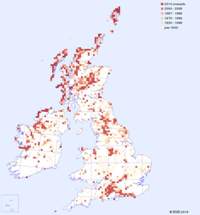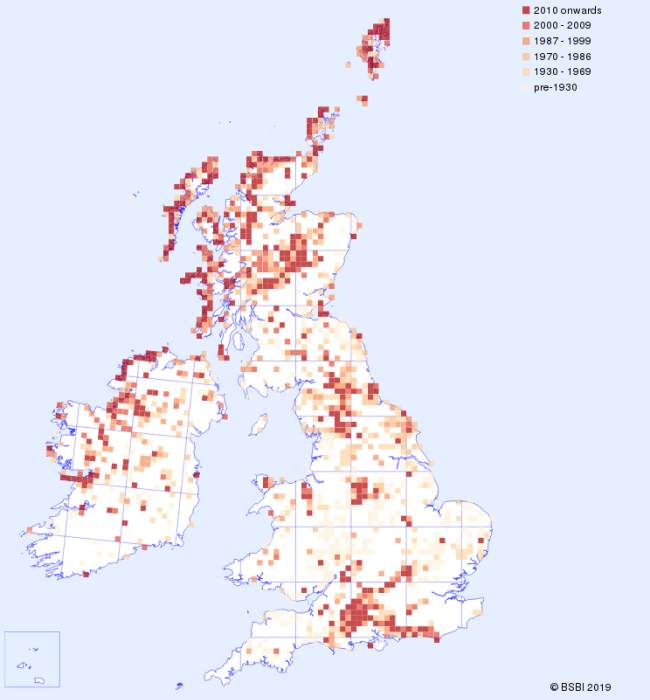Classified as Vulnerable, the Frog Orchid is in steep decline in Britain and has been lost altogether from many of its former sites due to habitat loss and destruction. This curious little plant favours short lime-rich to neutral grassland, and its somewhat drab appearance can make it difficult to spot. This orchid varies in colour from green to reddish-purple and is said to resemble a frog - a rather fanciful idea but fun nevertheless. Frog Orchid was once plentiful in boggy grassland, but land drainage has destroyed most of the old sites. Today some of the best places to look for Frog Orchids are in abandoned quarries, on limestone pavements, and in coastal short-sward grasslands, although they can still be found in some upland flushes. The flowering time is from late May to the end of August, but the peak is usually from mid June to mid July. Dactylorhiza viridis is widespread but localised throughout Britain. Elsewhere in Europe the Frog Orchid is recorded as far north as Iceland, and its range extends to Italy in the south.
| Distribution Map | Key Features | |
 |
Records for the Frog Orchid from BSBI are shown on the map with most recent in front. (Hover the mouse over the small map to expand it.) |
Plant: usually 5 to 15cm tall but occasionally to 25cm, mostly greenish-yellow but some plants have dark reddish-brown stems getting darker towards the tip. There are one or two brownish sheaths at the base of the plant. |
Image Gallery for Frog Orchid Dactylorhiza viridis
| Pollination | Taxonomy & Hybrids |
The Frog Orchid flower produces nectar and is visited by a variety of small insects including wasps and beetles. Self-pollination is also possible, as is occasional vegetative reproduction. |
Formerly Coeloglossum viride, the Frog Orchid was moved to the Dactylorhiza genus following genetic study which revealed that it was more closely related to the Spotted-orchids. The specific name viridis means 'green'. |
Articles about Frog Orchid in JHOS
